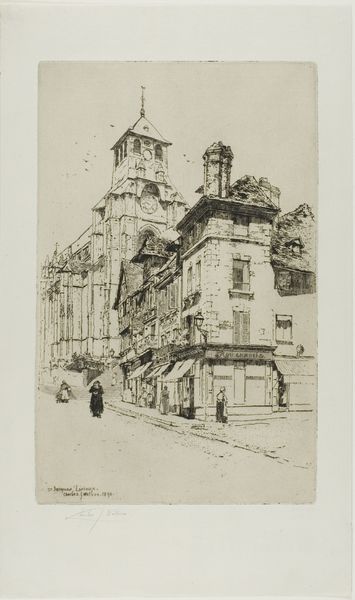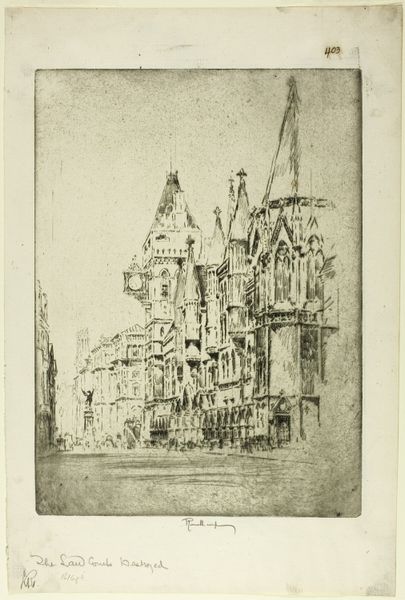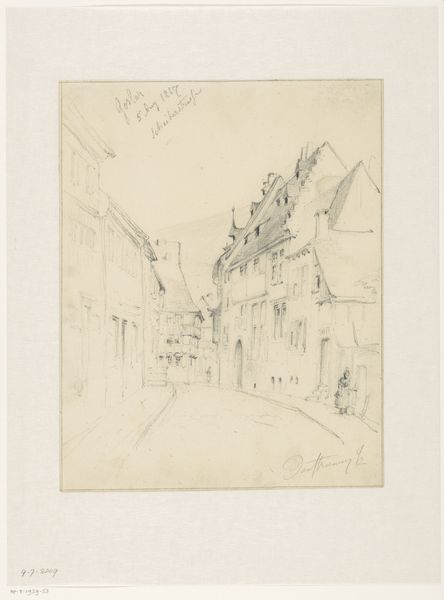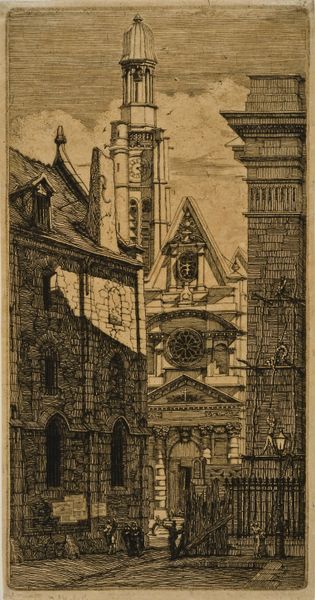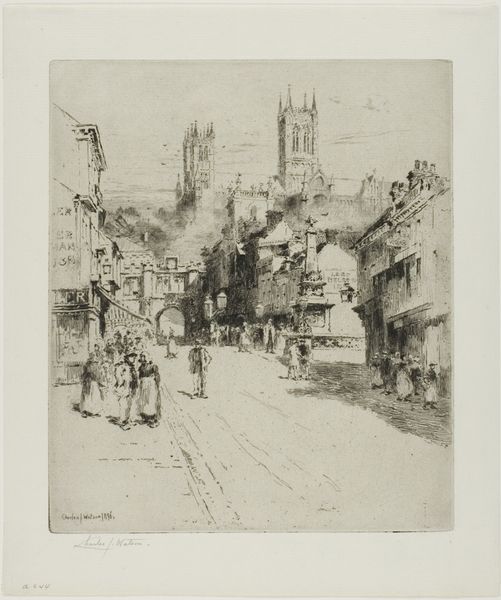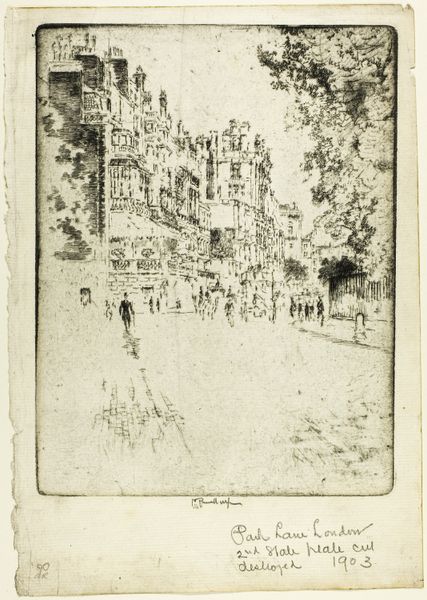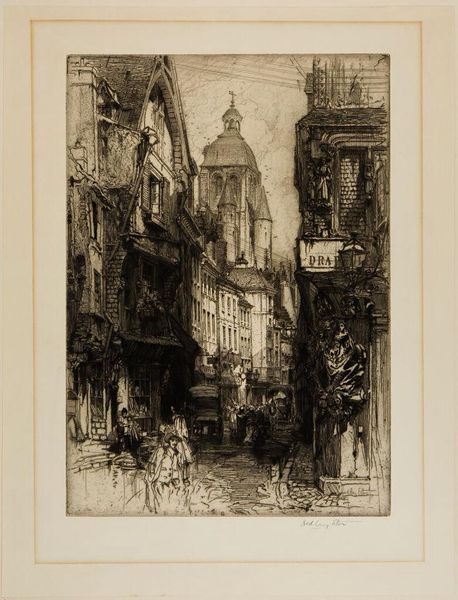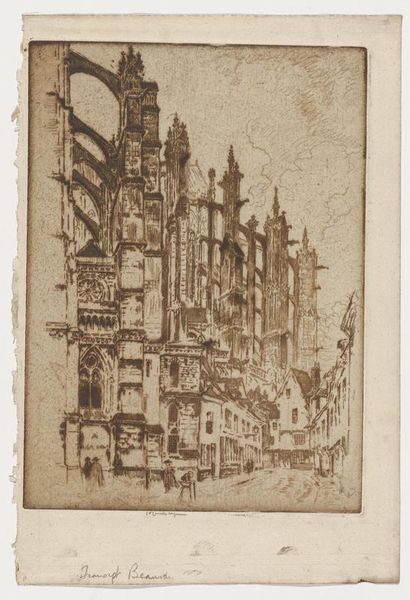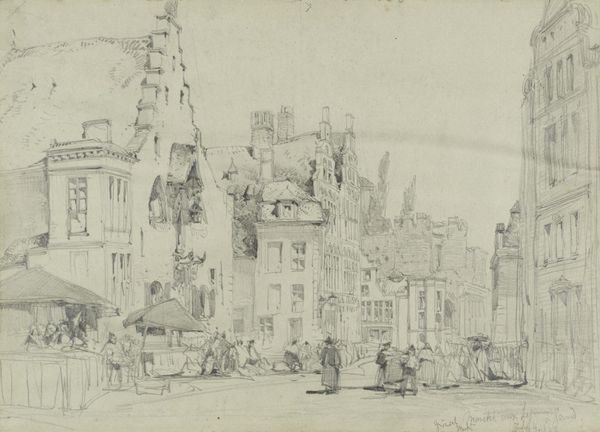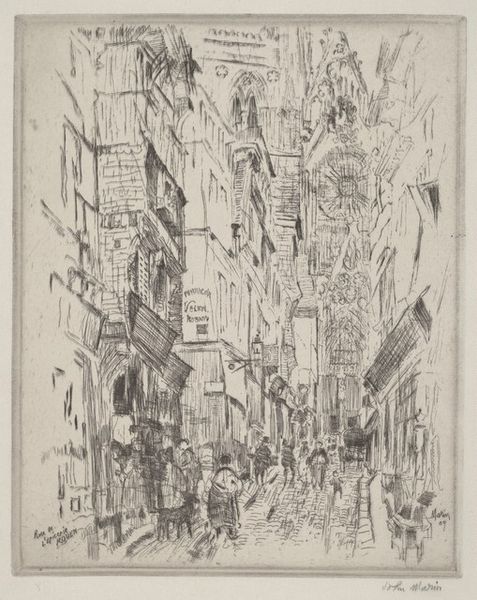
Dimensions: 203 × 151 mm (image/plate); 230 × 183 mm (sheet)
Copyright: Public Domain
Charles John Watson made this etching, Abbéville, at some point during his lifetime. Look at how he's used a kind of shorthand to describe the buildings, a flurry of tiny marks that somehow cohere into walls and roofs. It’s like he’s not just depicting a place, but also showing us his thinking about it, the process of trying to capture it. The surface has this amazing quality, both delicate and robust. The etched lines have a slight graininess, giving the whole image a tangible, almost weathered feel. See how the cathedral looms in the background, rendered with such intricate detail that it feels both monumental and a little ghostly? The way Watson contrasts the solid architecture with the fleeting presence of the figures in the foreground reminds me of Piranesi, who was working a century earlier. There’s a lovely openness here, a sense that Watson is inviting us not just to look, but to wander, to get lost in the details, and to find our own way through the scene.
Comments
No comments
Be the first to comment and join the conversation on the ultimate creative platform.
